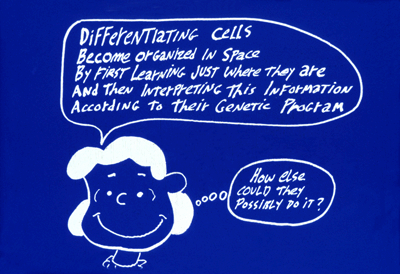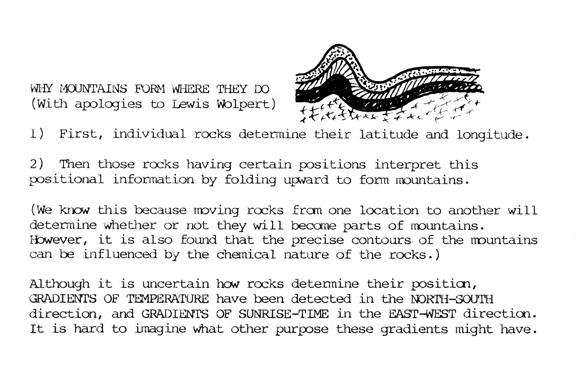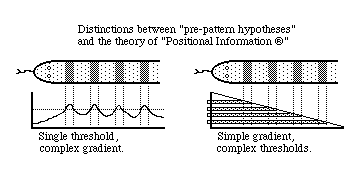January 28, 2013 lecture
Embryology Biology 441 Spring 2013 Albert Harris
Embryonic Regulation:
| Mammals | Sea Urchins | Frogs | Sea Squirts | Clams | Nematodes | |||||
| More Regulative | More Mosaic |

But maybe the most regulative of all are...
Cellular Slime Molds
such as Dictyostelium discoideum The fragments of slugs form 'scale model' normally-proportioned fruiting bodies.
QUESTIONS FOR CLASS DISCUSSION: 1) IS EMBRYONIC REGULATION (DRIESCH'S PHENOMENON) AN EXAMPLE OF WOUND HEALING
2 IS REGENERATION A CLOSER ANALOGY TO WHAT DRIESCH DISCOVERED?
3) DRIESCH HIMSELF CONCLUDED THAT MIND-LIKE "ENTELECHIES" What do you think about that? Can surprising observations prove that supernatural causes exist? 4) PROBABLY THE MAJORITY VIEW TODAY IS THAT MORE REGULATIVE EMBRYOS WAIT UNTIL LATER IN DEVELOPMENT BEFORE CELL FATE BECOMES IRREVERSIBLE ???????????????????????????????????????????????????????????????????????????????
But what sort of mechanism is required to adjust cell fates in proportion to reduced size? -------------------------------------------------------------------------------- What different explanations have scientists considered might cause EMBRYONIC REGULATION? Lewis Wolpert's great conceptual breakthrough is what he calls POSITIONAL INFORMATION. This set of hypotheses ("Principle') explains regulation by a combination of x, y & z coordinate axes (caused by chemical gradients), with each cell deciding how to differentiate based on its local measurements of the x, y, z variables. The worms below illustrate how the concept would explain adjustment of proportions in regeneration of an imaginary flatworm that has three differentiated cell types (Red, white and blue)
The textbook author likes this theory, so do many others; but not me.
**********************************************************
Fundamental differences between "Positional Information"
Later in the course, we will study Turing's mechanism, Liesegang rings and other "reaction-diffusion systems" , which are ways to generate prepatterns, but don't "regulate" = adjust wavelength in proportion But some "Mechanochemical" systems can "regulate" proportional sizes of parts. >>>>>>>>>>>>>>>>>>>>>>>>>>>>>>>>>>>>>>>>>>>>>>>>>>>>>>>>>>>>>>
Thoughts and questions about regulation:When you cut a spherical water drop in two, the two fragments each become smaller spheres. Do you regard that as regulation?Does each water drop contain an entelechy? If surface tension could somehow cause drops to be cubes, then cutting one cube in two might also result in the two fragments each becoming a smaller cube. (But cubic crystals don't "regulate" when cut in two! nor do any other shape crystals) Slime mold slugs have (somewhat!) consistent length/width ratios (~8) and are nearly round in cross sections. Is that regulation?
The length/width ratio can be changed by mutations and by feeding unusual diets, both of which also cause changes in ratios of numbers of cells that differentiate into stalk cells versus spore cells. Flat-worms and Hydras also respond to being cut in pieces by rearranging their remaining cells so as to restore approximately their original length/width ratios.
|




